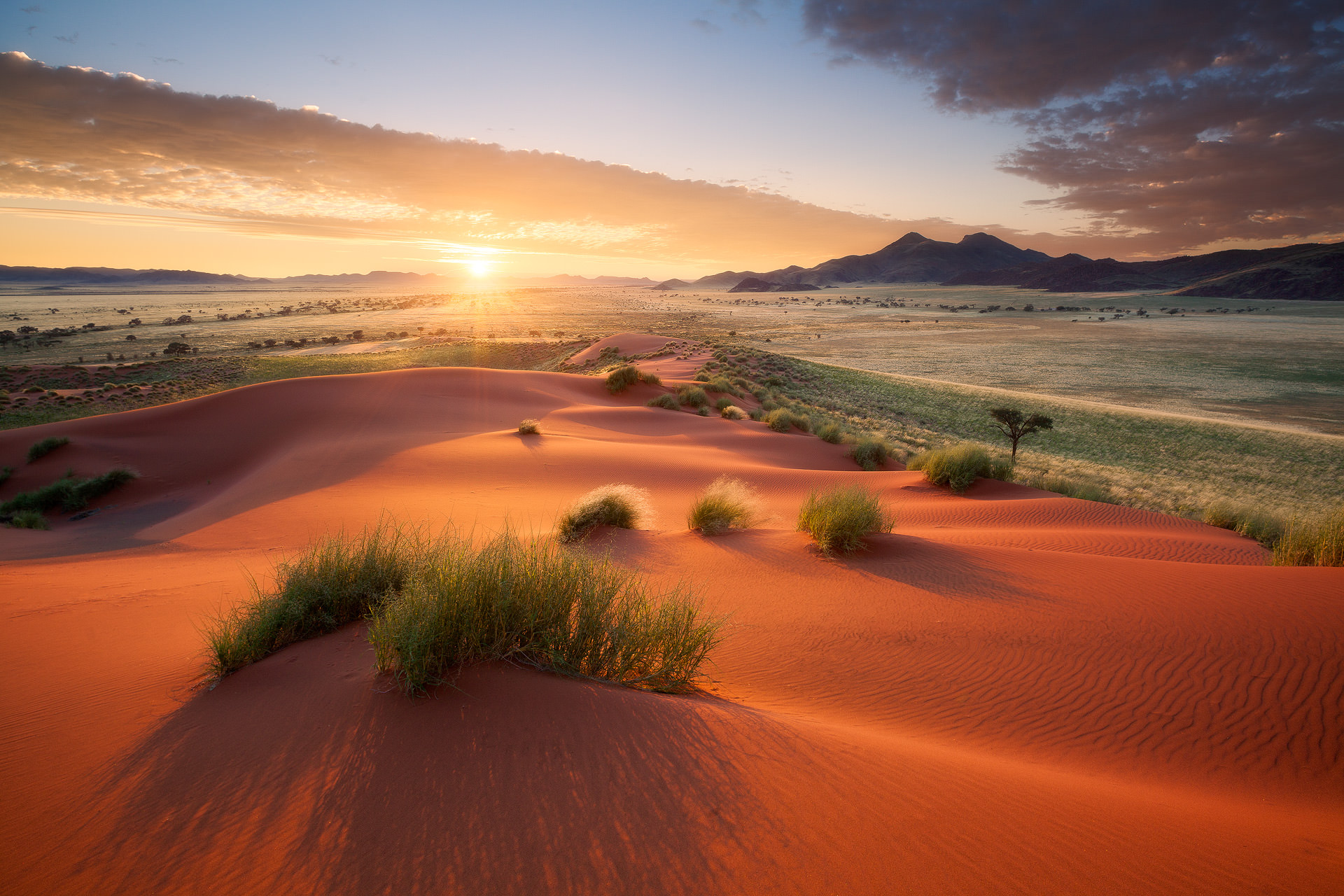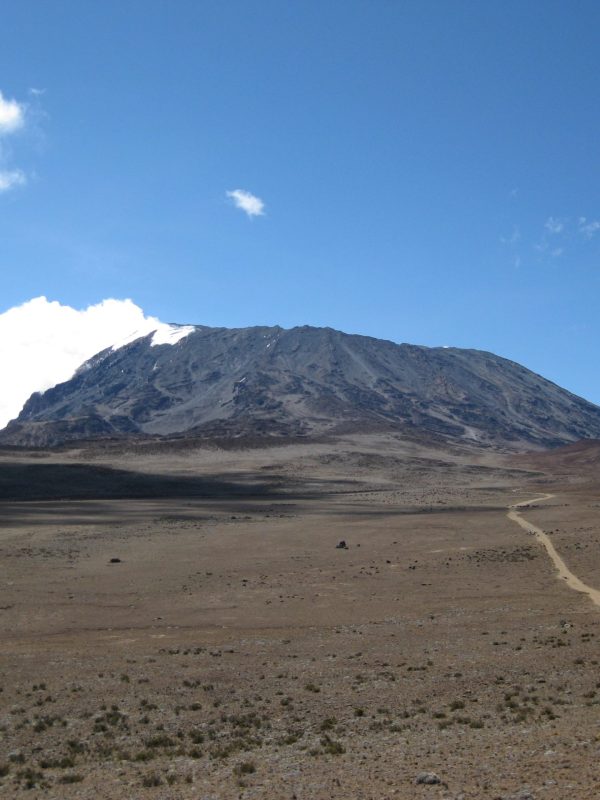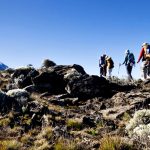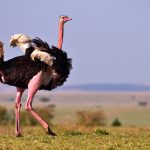Namibia Safari: A Guide To Going On Safari In Namibia
- Home
- Botswana Safari
Introduction
Welcome to Namibia, where wild calls and adventure awaits! Namibia is a country located in southwestern Africa, known for its vast deserts, towering sand dunes, rugged landscapes, and abundant wildlife. Embarking on a safari in Namibia is an extraordinary experience that allows you to witness nature in its purest form. From the majestic elephants roaming the plains of Etosha National Park to the elusive desert-adapted species of the Namib Desert, there is something truly magical about exploring the wilderness of Namibia. In this guide, we will provide you with valuable insights, tips, and recommendations to ensure that your Namibia safari is nothing short of remarkable.

Namibia: A Land of Beauty and Wildlife
Namibia, often referred to as the “Gem of Africa,” is a land of unparalleled beauty and incredible biodiversity. Its landscapes are as diverse as they are captivating, ranging from the iconic red dunes of the Namib Desert to the rugged mountains of the Naukluft Range. Namibia is also home to an array of wildlife, including the famous Big Five (elephant, lion, leopard, rhinoceros, and buffalo) and a host of other species, both common and rare. The country’s commitment to conservation has made it a safe haven for wildlife, ensuring that future generations can also experience the wonders of its natural heritage.
Best Time to Visit Namibia for Safari
When planning your Namibia safari, timing is crucial. The country’s climate is generally dry and sunny, but temperatures can vary significantly depending on the season and region. The best time to visit Namibia for a safari largely depends on your preferences and the wildlife encounters you wish to have. Let’s explore the different seasons in Namibia and what they offer:
Dry Season (May to October): This is the peak safari season in Namibia. The weather is mild, and wildlife viewing is excellent as animals gather around water sources. It’s an ideal time for photography enthusiasts, as the clear skies and soft lighting enhance the beauty of the landscapes.
Wet Season (November to April): The wet season in Namibia brings refreshing rains, transforming the arid landscapes into lush greenery. While wildlife disperses, this season offers its own unique experiences, such as birdwatching and the opportunity to witness newborn animals.
Planning Your Namibia Safari: Things to Consider
Embarking on a Namibia safari requires careful planning to ensure a seamless and enjoyable experience. Here are some essential factors to consider when planning your adventure:
Choosing the Right Safari Operator
Selecting the right safari operator is key to having a memorable experience in Namibia. Look for operators that have extensive experience in the country, knowledgeable guides, and a commitment to responsible tourism. Research their reputation, read reviews, and compare packages to find the one that best suits your needs and budget.
Selecting the Ideal Safari Duration
The duration of your Namibia safari will depend on various factors, including your travel goals, budget, and available time. While shorter safaris can offer a taste of the wildlife and landscapes, a longer duration allows for a more immersive experience. A typical safari in Namibia ranges from 5 to 14 days, giving you ample time to explore different regions and maximize your wildlife sightings.
Deciding on the Safari Accommodation
Namibia offers a wide range of accommodation options, catering to different budgets and preferences. From luxury lodges to tented camps and self-catering options, there is something for everyone. Consider the location, amenities, and proximity to wildlife areas when choosing your accommodation. It’s important to book well in advance, especially during peak season, to secure your preferred choices.
Exploring Etosha National Park: A Wildlife Haven
Etosha National Park, located in northern Namibia, is a true wildlife haven and one of Africa’s premier game reserves. Covering an area of over 22,000 square kilometers, the park is home to an incredible diversity of wildlife and landscapes. Etosha’s centerpiece is the Etosha Pan, a vast, flat expanse of salt that attracts a myriad of animals, especially during the dry season. Let’s delve into the wonders that await you in Etosha National Park.
Wildlife Sightings in Etosha National Park
Etosha is renowned for its exceptional wildlife sightings, offering visitors the opportunity to see an array of animals in their natural habitat. The park is home to all of the Big Five, as well as numerous other species, including giraffes, zebras, cheetahs, and hyenas. The waterholes scattered throughout the park attract large concentrations of wildlife, creating incredible opportunities for observing interactions between different species.
Exploring Etosha: Game Drives and Waterhole Visits
The best way to experience the wonders of Etosha is through game drives and waterhole visits. Game drives are conducted in open safari vehicles, allowing for unobstructed views of the surrounding landscapes and wildlife. Knowledgeable guides will navigate the park’s vast network of roads, taking you to prime wildlife viewing areas. Be sure to bring your binoculars and camera to capture the unforgettable moments.
In addition to game drives, visiting the waterholes is a must-do activity in Etosha. These waterholes are hotspots for wildlife activity, especially during the dry season. Witnessing herds of elephants, pride of lions, and dazzles of zebras gathering around the water sources is an awe-inspiring experience. Settle down at one of the park’s designated waterhole viewing points and prepare to be amazed by the natural theater unfolding before your eyes.
Accommodation Options in Etosha National Park
Etosha offers various accommodation options to suit different preferences and budgets. Inside the park, there are several camps and lodges that provide comfortable lodging, ranging from self-catering chalets to luxury en-suite rooms. Staying inside the park allows for easy access to the wildlife areas, particularly during the early mornings and late afternoons when animal activity is at its peak.
If you prefer a more exclusive and intimate experience, there are also private lodges and camps located in the concession areas adjacent to the park. These lodges offer luxury accommodations, gourmet cuisine, and personalized safari experiences. Some even have their own private waterholes, ensuring wildlife encounters are just steps away from your doorstep.
The Enchanting Skeleton Coast: Where the Desert Meets the Sea
The Skeleton Coast is a stretch of rugged coastline that spans over 500 kilometers along the northwest coast of Namibia. Its name comes from the countless shipwrecks scattered along its shores, serving as a reminder of the treacherous conditions that sailors once faced. Despite its haunting name, the Skeleton Coast is a place of remarkable beauty and unique ecological significance. Let’s delve into the enchantment of this coastal wilderness.
The Unique Landscape of the Skeleton Coast
The Skeleton Coast is characterized by its dramatic landscapes, where the vast Namib Desert meets the roaring Atlantic Ocean. Here, towering sand dunes cascade down to the shoreline, creating a striking contrast between the vibrant orange hues of the desert and the deep blues of the sea. The desolate stretches of coastline, dotted with shipwrecks and bleached whalebones, add to the area’s mystique and allure.
Wildlife and Marine Life of the Skeleton Coast
Contrary to its desolate appearance, the Skeleton Coast is teeming with life. The cold Benguela Current that runs along the coast creates a nutrient-rich marine environment, attracting a wealth of marine life. Cape fur seals, dolphins, and even whales can be spotted offshore, while numerous species of seabirds nest along the cliffs and dunes. Exploring the area on a boat or scenic flight provides a unique perspective and unrivaled opportunities for wildlife encounters.
Exploring the Skeleton Coast: Activities and Attractions
There are several ways to explore the Skeleton Coast, each offering its own distinct experience. Scenic flights are a popular choice, allowing you to soar above the vast landscapes and gain a bird’s-eye view of the shipwrecks, sand dunes, and seal colonies. These flights provide an unparalleled perspective of the coastline’s grandeur and allow you to appreciate its sheer size and untouched beauty.
For those seeking a more ground-level adventure, guided tours, and self-drive trips are also available. Navigating the coastal roads and exploring the area’s hidden gems at your own pace allows for a more intimate connection with the landscape. Visit the Cape Cross Seal Reserve, where thousands of Cape fur seals congregate, or hike through the dunes and uncover the remnants of shipwrecks that have become part of the desert.
Damaraland: Discovering Namibia’s Ancient Desert Landscape
Damaraland, located in the north-central part of Namibia, is a land of ancient geological wonders and cultural heritage. This rugged and remote region is home to some of the country’s most iconic landmarks, including the Brandberg Mountain, Twyfelfontein rock engravings, and the Petrified Forest. Exploring Damaraland is like stepping back in time, where the stories of the past are etched into the land. Let’s uncover the treasures that await in this captivating region.
The Unique Geology of Damaraland
Damaraland’s landscape is shaped by millions of years of geological processes, resulting in a truly unique and awe-inspiring environment. The region is characterized by vast plains, rocky outcrops, deep gorges, and ancient volcanic formations. The Brandberg Mountain, the highest peak in Namibia, stands majestically in the landscape, its reddish hues contrasting against the surrounding terrain.
Twyfelfontein: A UNESCO World Heritage Site
Twyfelfontein is a remarkable site in Damaraland that showcases one of the largest collections of rock engravings in Africa. These engravings, estimated to be over 6,000 years old, depict various animals, humans, and intricate geometric patterns. The engravings provide valuable insights into the lives and beliefs of the early hunter-gatherer communities that once inhabited the area. Twyfelfontein has been recognized as a UNESCO World Heritage Site for its cultural and historical significance.
Wildlife Encounters in Damaraland
Despite its arid and seemingly inhospitable conditions, Damaraland is home to a surprising array of wildlife, including desert-adapted species that have evolved to survive in this harsh environment. Desert-adapted elephants, rhinoceroses, giraffes, and lions are among the fascinating creatures that roam the region. Spotting these resilient animals in their natural habitat is a truly remarkable experience and a testament to the adaptability of life in Namibia.
The Petrified Forest: A Prehistoric Wonder
The Petrified Forest, located near the town of Khorixas in Damaraland, is a surreal and otherworldly landscape. Dating back over 280 million years, this ancient forest was once a lush oasis teeming with tall trees. Today, these trees have turned to stone, their organic matter replaced by minerals over the course of millennia. Walking among the petrified trunks, one can’t help but marvel at the passage of time and the extraordinary forces of nature.
The Magnificent Sossusvlei: A Photographer’s Paradise
Sossusvlei is a photographer’s paradise and one of Namibia’s most iconic destinations. Located in the Namib Desert, it is known for its towering sand dunes, vibrant colors, and stark contrasts. The ethereal beauty of Sossusvlei has captivated travelers and photographers alike, drawing them in with its otherworldly allure. Let’s immerse ourselves in the splendor of Sossusvlei and discover the secrets of this mesmerizing landscape.
The Majestic Dunes of Sossusvlei
Sossusvlei is home to some of the highest sand dunes in the world, reaching heights of up to 300 meters. These dunes, sculpted by the winds over millions of years, create a surreal and ever-changing landscape. The vibrant orange hues of the dunes contrast against the deep blue sky, creating a mesmerizing sight that is best experienced during sunrise or sunset when the colors are at their most dramatic.
Deadvlei: A Photographer’s Dream
Deadvlei is a clay pan located within the Namib-Naukluft National Park, near Sossusvlei. It is a place of haunting beauty, characterized by its white clay floor, dead acacia trees, and towering red dunes in the background. The contrast between the dark, lifeless trees and the surrounding dunes creates a surreal and photogenic scene that has become synonymous with the Namib Desert. Photographers flock to Deadvlei to capture its timeless and otherworldly essence.
Climbing Big Daddy: A Thrilling Adventure
For adventurous souls, climbing Big Daddy, one of the tallest dunes in Sossusvlei is an exhilarating experience. The steep ascent to the dune’s summit requires stamina and determination but rewards you with breathtaking panoramic views of the surrounding desert. Descending the dune is a thrilling adventure, as you slide down the soft sands, feeling a rush of adrenaline and childlike joy.
Exploring Sesriem Canyon
Located just outside the entrance to Sossusvlei, Sesriem Canyon is a natural wonder that provides a glimpse into the geological history of the area. Carved by the Tsauchab River over millions of years, the canyon reveals layers of sediment and exposes the raw power of erosion. Exploring the narrow gorge, with its towering walls and hidden pools, is a fascinating experience that offers respite from the desert heat.
FAQs: A Guide To Going On Safari In Namibia
1. When is the best time to visit Namibia for a safari?
The best time to visit Namibia for a safari is during the dry season, from May to October. The weather is mild, and wildlife sightings are abundant as animals gather around water sources.
2. What wildlife can I expect to see on a Namibia safari?
Namibia is home to an incredible diversity of wildlife. You can expect to see the Big Five (elephant, lion, leopard, rhinoceros, and buffalo) as well as giraffes, zebras, cheetahs, hyenas, and various bird species.
3. How long should I plan for a Namibia safari?
The duration of your Namibia safari depends on your preferences and available time. A typical safari ranges from 5 to 14 days, allowing for an immersive wildlife experience and exploration of different regions.
4. Are there accommodation options inside the national parks in Namibia?
Yes, Namibia offers accommodation options inside national parks, including camps and lodges. Staying inside the parks allows for easy access to wildlife areas, particularly during peak animal activity times.
5. What are the must-visit destinations in Namibia for safari enthusiasts?
Some of the must-visit destinations in Namibia for safari enthusiasts include Etosha National Park, the Skeleton Coast, Damaraland, and Sossusvlei. Each offers unique wildlife encounters and stunning landscapes.
6. Is it safe to go on safari in Namibia?
Namibia is generally considered a safe country for travelers. It has a stable political environment and a strong commitment to conservation. However, it is always important to take standard safety precautions and follow the advice of local authorities.
Conclusion
Namibia is a safari enthusiast’s dream, offering a unique blend of breathtaking landscapes and extraordinary wildlife encounters. From the iconic dunes of Sossusvlei to the rugged Skeleton Coast and the wildlife-rich plains of Etosha, Namibia has something to offer every traveler. By planning your safari carefully, choosing the right operators, and immersing yourself in the beauty of the country, you can create memories that will last a lifetime. So pack your camera, binoculars, and sense of adventure, and embark on an unforgettable journey through the wild wonders of Namibia.
$1,830 / per person
request safari to Namibia



Ready to Reach New Heights?
Book Your Kilimanjaro Climbing Tour Now and Experience the Thrill of a Lifetime!
Embark on a Kilimanjaro Trekking Adventure with Beauty of Creation Safaris! Book Your Climb Now and Discover the Breathtaking Beauty of Africa’s







